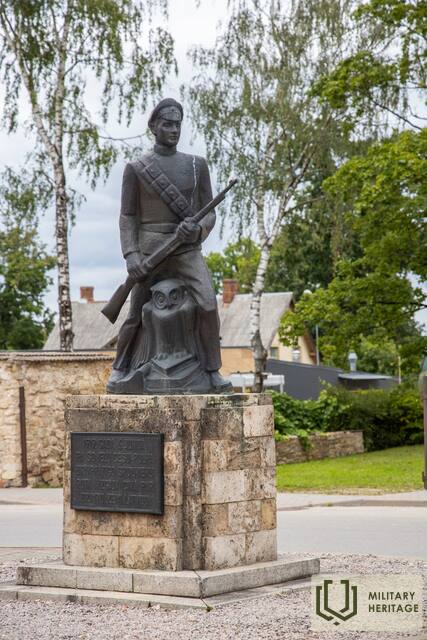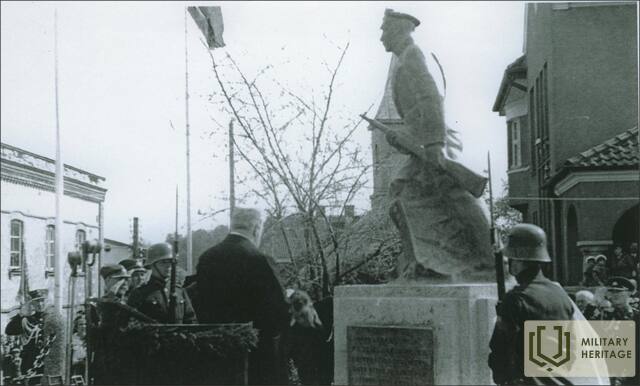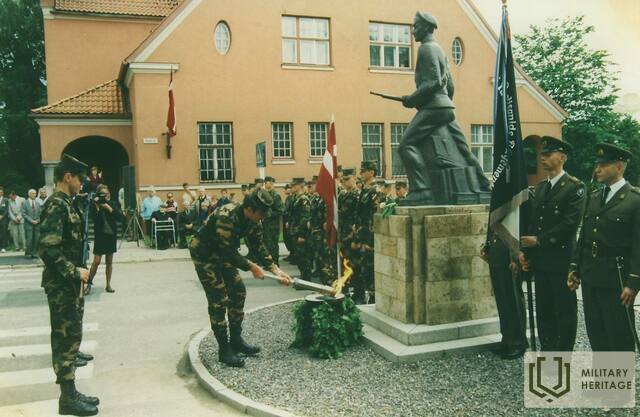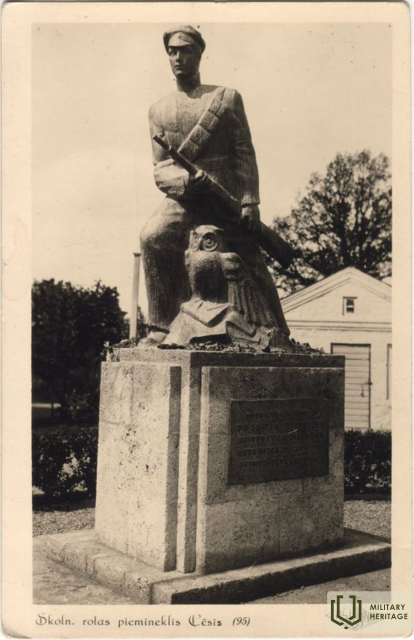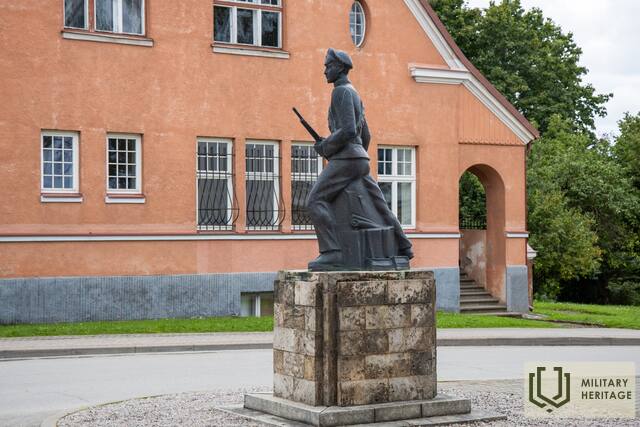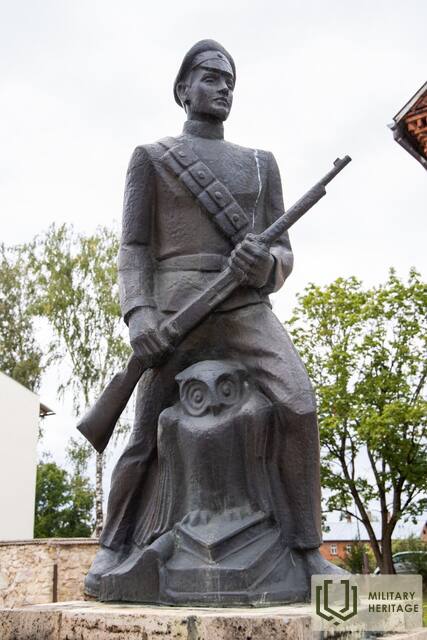Monument for students of the Cēsis Regiment
Memorial site

 88
88



The monument to the soldiers of the Cēsis Regiment Students’ Company who died in the Battles of Cēsis is located in the city of Cēsis, near the intersection of Palasta and Bērzaines streets. The construction of the monument was proposed by the Soldiers’ Association of the Cēsis Regiment Students’ Company. The monument was unveiled on 26 May 1938. The monument is based on the idea sketched by artist Jānis Rozenbergs, a former soldier of the company. Placed on a metre-high limestone pedestal, the 1.8-metre copper sculpture of a soldier dressed in a school student’s uniform was created by sculptor Rūdolfs Āboltiņš and coppersmith Jānis Zibens. An owl, a symbol of wisdom and knowledge, lies at the soldier’s feet, squatting on and protecting the books of a student who went to war. The sculpture was demolished during the Soviet re-occupation in 1952. A monument named the Komsomol Flag Bearer by sculptor Kārlis Jansons was erected near its former location in 1957. Placed near its historic site, the restored monument was unveiled on 11 November 1992. At the same time, in 1992, a monument to the Komsomol, which had been erected by the occupation regime, was taken down.
Used sources and references:
Lismanis, J. 1915-1920. In memory of battles and fallen soldiers: Memorial sites of the First World War and the Latvian Liberation Struggle. Riga: NIMS, 1999.
Tālis Pumpuriņš, Cēsis History and Art Museum
https://www.lv100.lv/jaunumi/tapusi-dokumentali-izglitojosa-filma-skoleniem-cesu-kaujas-pagrieziena-punkts-latvijas-vesture/
Related timeline
Related stories
The monument dedicated to the Cēsis Regiment student detachment near the former Livu Parish Hall
The Cēsis Regiment volunteer schoolboy company participated in the 1919 Cēsis battles, which formed as a combat unit from 108 young people from Valmiera and Cēsis schools on June 5 in the premises of the Cēsis Progymnasium. Already on the night of June 5 to 6, about an hour after midnight, there was an alarm and the company was ordered to move to positions. The company moved to the Mācītājmuiža - Meijermuiža line, which was considered the most important battle area.
In the first battle, several schoolchildren were wounded, but Edgars Krieviņš, a Valmiera native, died on the same day from a very serious wound to the stomach. He was buried with military honors at the Valmiera City Cemetery on June 13. Edgars Krieviņš was posthumously awarded the Lāčplēsis War Order.
The unusual story of the monument to the Cēsis Regiment's School Company
The Cēsis Regiment volunteer schoolboy company participated in the 1919 Cēsis battles, which formed as a combat unit from 108 young people from Valmiera and Cēsis schools on June 5 in the former Cēsis German Progymnasium premises on Dārza Street (now Bērzaines Street 4). Already on the night of June 5 to 6, about an hour after midnight, there was an alarm and the company was ordered to go to positions. The company went out to the Mācītājmuiža – Meijermuiža line, which was considered the most important battle area.
The beginning, course and conclusion of the Battle of Cēsis
The victory in the Battle of Cēsis was destined to become a turning point in the Latvian and Estonian struggle for the independence of their country. This victory put an end to the plans of the Andrievs Niedra government and the German general Rüdiger von der Goltz to conquer the Baltics. Instead, the Latvian Provisional Government of Kārlis Ulmanis resumed its activities in Liepāja.




